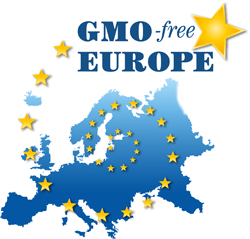Protected areas & biodiversity
A4 - Saturday 14:30 - 16:30
Description
European States and regions have different approaches towards GMO releases and planting in and around protected areas. The workshop will explore the needs and possibilities for specific eco-regional risk assessment, precautionary measures and monitoring schemes. While some nature protection authorities try to act on a precautionary basis, others restrict possible measures to not yet defined cases of “proven damage” to the environment. The workshop will examine the different experiences and approaches thus far and discuss possible joint strategies within the framework of the EU and national legislation on protected areas with a special emphasis on regional opportunities and needs. It will also address the present level of regional biodiversity protection within the EU’s risk assessment and approval process.
![]() Submit suggestions and documents
Submit suggestions and documents
Key participants and speakers:
Katja Moch (Institute for Applied Ecology, Germany)
Analysis of German regulations for protected areas regarding GMO relevant provisions
Anna Hope (English Nature, UK)
GM crops and protected areas: the UK experience
Josef Hoppichler (Federal Institute for Less-Favoured and Mountainous Areas, Austria)
Approaches to GMO-free Protected Areas
Tomasz Winnicki ( Kolegium Karkonskie, Poland)
Protected Areas and Biodiversity in Poland
Background Documents
Dr. Gaetano Sinatti Associazione Terre Dell’Adriatico (January 2006)
Strategy for Agricultural Products Identity Defence
Wide Area Protection of Agriculture Products Identity from GMO Pollution
NABU (January 2006)
Handlungsbedarf zum Schutz von Natur und Umweltvor den Risiken beim Inverkehrbringen und Einsatz von gentechnisch veränderten Organismen
this 8-page long legal opinion shows that numerous shortcomings exist in the current regulations so that the protection of humans and teh environment from damages caused by GMOs cannot be guaranteed. (German).
Federal Ministry of Health and Woman Affairs, Austria 2005
Summary of Biodiversity Hotspots in Austria
A biodiversity-study was undertaken to create abase of knowledge data concerning the vegetation and butterflies within agro ecosystems throughout Austria.
Daniel Ammann (2005)
The precautionary principle
On 9 pages prepared for the GMO-free regions conference 2005, Amman shows the application, shortcommings and need for implementation of the Precautionary Principle in the EU.
IUCN (November 2004)
A moratorium on the further release of GMOs
The World Conservation Congres calls for a moratorium on further environmental releases of GMOs until this can be demonstrated to be safe for biodiversity, human and animal health beyond reasonable doubt. The delegations of Japan, The Netherlands and Sweden indicated that they were unable to support this Resolution.
IUCN (November 2004)
GMOs and biodiversity
Final version of the IUCN Resolution from the 3rd World Conservation Congress on. The US state and authorites declined to take part in a discussion about these issues.
Josef Hoppichler (1999)
Concepts of GMO-free Environmentally Sensitive Areas
This 20 page-long study outlines the basic arguments and frameworks concerning GMO-free areas from a scientific and legal point of view as well as deals with the empirical results of a survey of experts' opinions about GMO-free areas and relates to different problems around the deliberate release of GMOs and the natural or/and agricultural environment (including organic farming).
